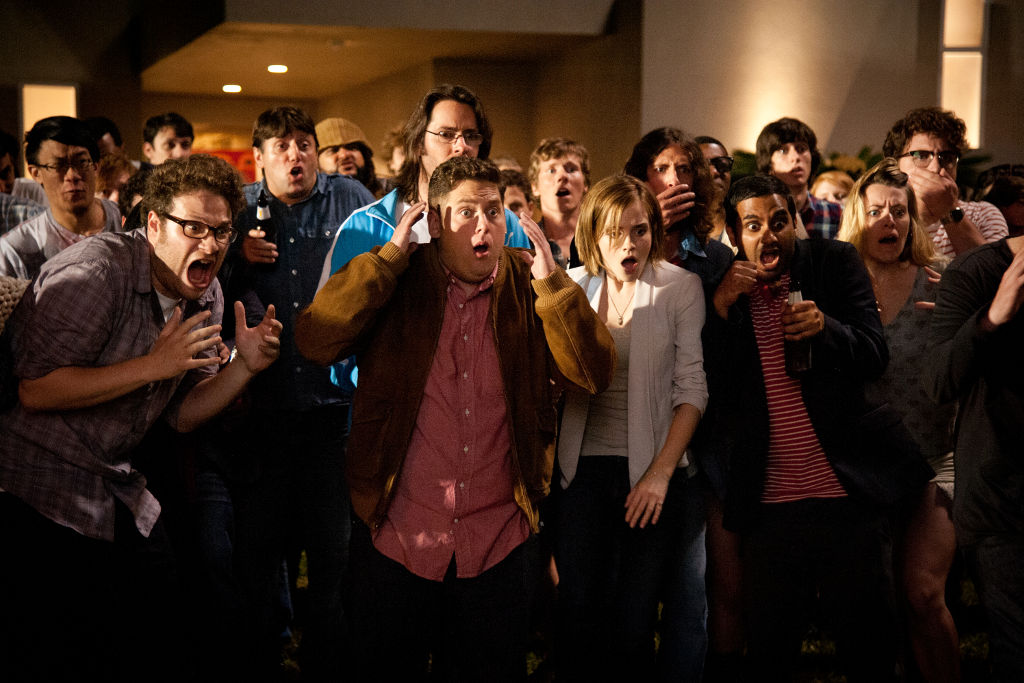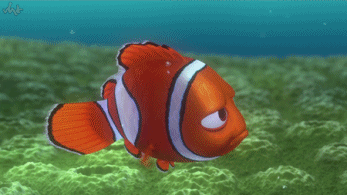Five Ways The World Could Actually End
Kinda wish we hadn't read this.

Hollywood seems hellbent on world destruction right now. Think about it.
Brad Pitt is fighting Zombies in World War Z. Laurence Fishburne and Bill Paxton are fighting to survive an Ice Age in The Colony. Simon Pegg and Nick Frost are fighting to make an old format funny again in The World’s End.
And Seth Rogen, James Franco, Jonah Hill, Jay Baruchel, Danny McBride and Emma Watson are fighting for screen time in This Is The End, out in Australia on July 18.
Good try Hollywood, but here’s five ways the world might ACTUALLY end. Like for realsies. Get scared now.
–
1. Huge Terrible Asteroid, Worse Than Armageddon
You might think the chances of a comet hitting earth are slimmer than the chances of a good Michael Bay movie, but scientists have discovered an asteroid the size of a footy field speeding through the galaxy on course that could hit the earth in 2036. If it does, the impact would have the force of 100,000 nuclear bombs, which is four times the number of nuclear bombs the world has.
Meaning that one day we really might need to send oil drillers to outer space to plant a nuclear bomb in an asteroid. We’re going to need more Bruce Willis.

–
2. Super Massive Volcano Hole
As you read this, Popocatepeti is erupting in Mexico, spewing ash and boiling rocks and grounding almost 50 flights. Back in 2010, when Eyjafjallaökullajdhbfaohvnoiel
But that’s nothing. In the grand scale of things, think of the Iceland eruption like dropping a Mentos into some Coke: kind of interesting, nerds get excited, but nobody’s getting really hurt.

A supervolcano, on the other hand, would be more like combining all the Mentos in the world into one giant Mentos, and then dropping that Mentos into a giant ocean of Coke and then setting off a few nuclear bombs for good measure.
If the super-volcano that is brewing in Yellowstone National Park in the USA erupted, for example, it could spread 1,000 cubic Kilometres of magma across the States. Which is 10,000 times worse than Iceland.
To be clear, that’s 1000 kilometers wide, 1000 kilometres long and 1000 kilometres high of molten rock. Which — just to be crystal clear — is rock so hot it melted. Like butter… but a rock.
Aside from all the Americans that would die, if a couple of these happened in a row (and there are six super-volcanos on Earth right now), the delicate balance of gasses and sunlight and temperatures that keep everything alive would be put out of whack and we’d be done.
But don’t worry. Even though scientists recently adjusted their predictions of a Yellowstone eruption to be more likely, they still think this is about half as likely as an asteroid collision.

–
3. Gulf Stream Goes AWOL
The Gulf Stream is great, you guys.
After some serious evaporation, the water in the arctic gets really salty. This cold salty water sinks, and the displacement drags water North from the tropics. If too much ice melts in the arctic, scientists believe the water will dilute and end that delicate cycle, stopping the Gulf Stream.

Why is it a problem if the Gulf Stream stops? Well, only that the warm water is what keeps the East Coast of America and the West Coast of Europe from freezing over. If it stops flowing it could send them both into a deep freeze. Which would be great for penguins! Not great for NATO.
–
4) Nuclear War
You know what was great about the cold war? All the no-actual-war. If the Mutually Assured Destruction of warheads being pointed all over the place had teetered over the edge, we might not be here today.
All it would take is 100 nuclear bombs to trigger a nuclear winter, in which the billions of radioactive particles and smoke and general dust that would fill the atmosphere would block out the sun, and send that delicate balance of ours into a deathly spiral.
Then, when that dust cloud of radioactive death was settling, we would have to hang out in some sort of shelter for months so as to not get covered in it.
So let’s save those nuclear bombs for blowing up the asteroid.
–
5) Bees Die, We Die
In 2006 scientists discovered that Bees were dying — and not because they’d lost the will to live and started stinging people willy nilly.
No, they’ve been dying because… because, um… well, we don’t know.

All we know is that up to 90% of hives in the States have collapsed. 90 PERCENT!
And this is a serious problem. One third of our food is pollinated by bees, not to mention all the livestock feed that is pollinated by bees. If all the bees die before we can work out why, then the famine that follows will starve us all into death — or at the very least a diet of tuna and calamari.
Oprah has to stop being so cavalier about them, for starters.

–
So when selecting your next this-is-it-we’re-all-going-to-die-save-yourselves blockbuster, remember… shit could get real any year now.
Good luck out there.
–
Kyran Wheatley is a 25-year-old from Perth who moved to Sydney. His other achievements include being a presenter for triple j, hosting numerous podcasts of varying success, and having a Twitter account that is his actual name.